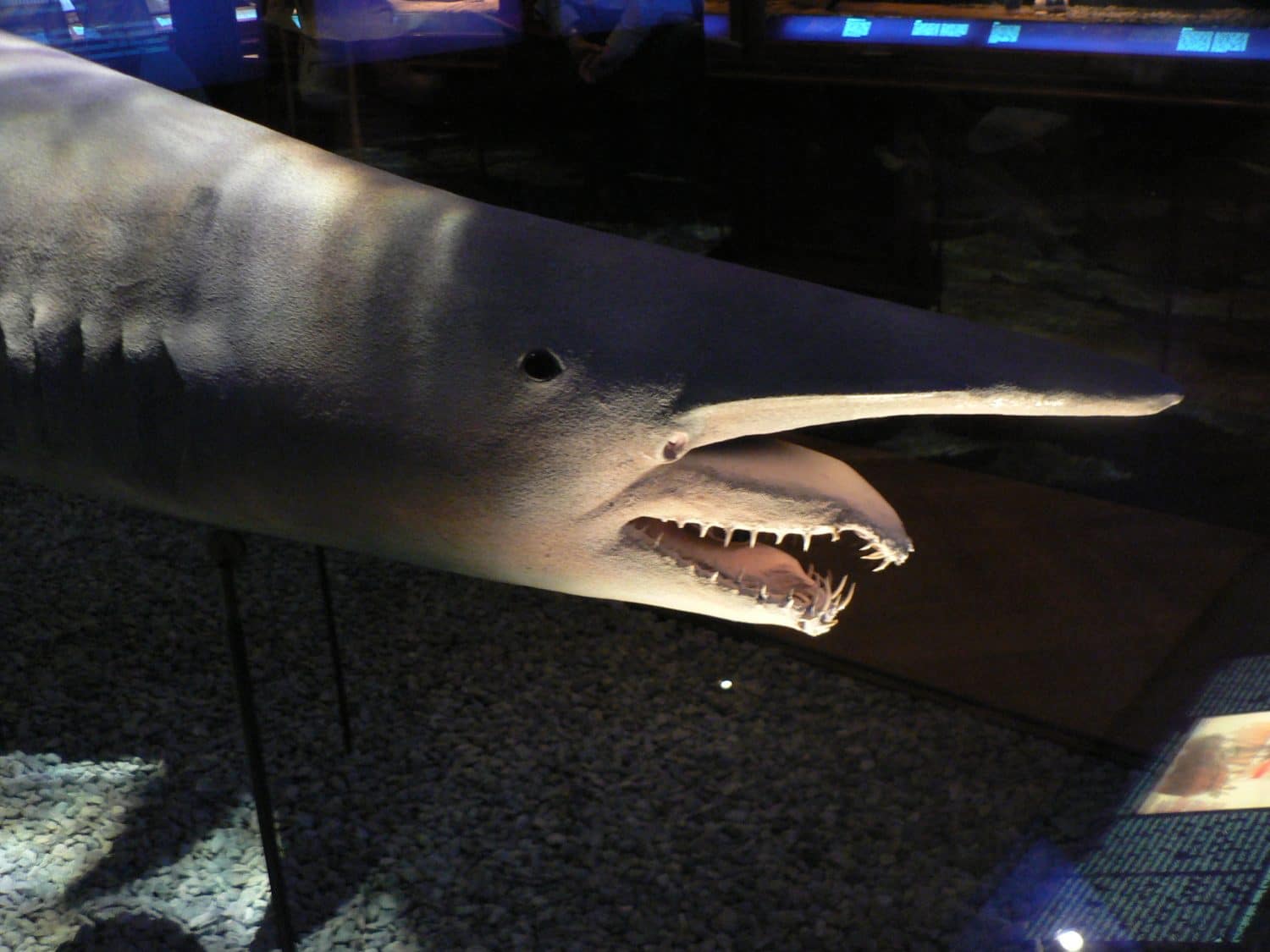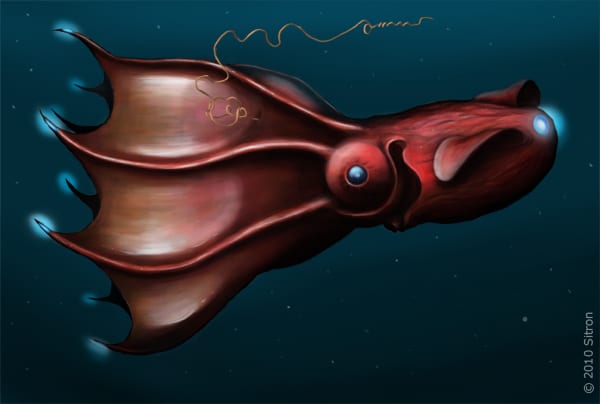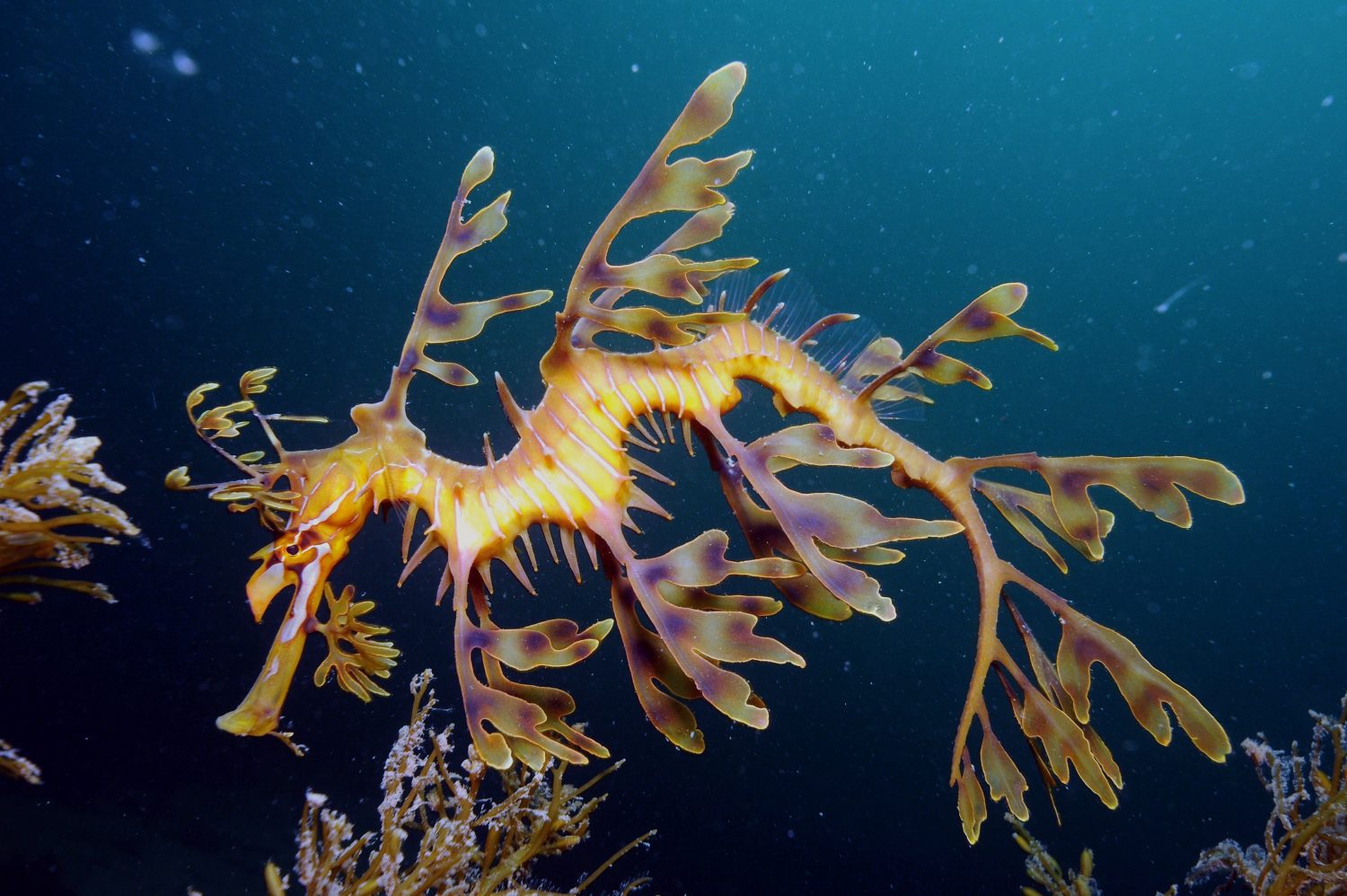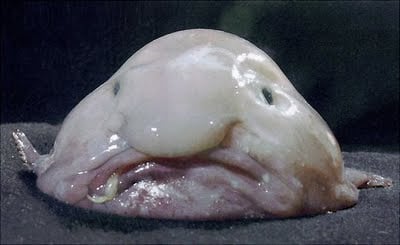Marine Life & Conservation
Fantastic (Underwater) Beasts, and where to find them!

By Gemma Smith
It is fair to say that there might not be that many underwater-specific spells, curses, potions or lotions. There may also be a distinct lack of any Nifflers, Nogtails, or Mooncalfs to see when we submerge and go diving. However, while we often look beyond the confines of our own world for enchantment and excitement, it is true without a doubt that the life we can encounter beneath the waves is bursting full of magic. As divers, we have a privileged portal to another world. And for many people, it may be even more captivating than they realise. There are just so many fantastic and mysterious animals living in our watery world. And these are just the ones we know about. There is so much left to explore in our oceans. Who knows what incredible creatures may still be unseen and undiscovered? And even for those more unusual ocean inhabitants, I think it’s important we always remember their unique charms! So, to showcase some of my favourite Blue Planet companions, here are my top five real-life ‘magical creatures.’
Goblin shark
The name alone is enough to intrigue you. Any animal named after the fabled goblin of fairytales and folklore is guaranteed to be amazing. In the Goblin Shark, you will not be disappointed. Even more interesting is how little we actually know about this species of shark. As a deep sea creature, it is the only remaining member of the ancient Mitsukurinidae family. Being referred to as a ‘living fossil’ is a testament to its ancestry. After all, it goes back all the way to the Cretaceous period!! This in part explains its surprising and primitive characteristics. It is best known for its unusual shaped snout, quite different from other shark species. Perhaps even more remarkable than its sword-like snout is it’s expanding jaw. It is able to move independently, and extend out when hunting. This is a peculiar, and perhaps bizarre, adaptation. Found swimming in depths ranging from around 40m/130ft to 1300m/4300ft, it might not be a sight you’d see on your standard dive, but there is no doubt these animals are otherworldly and incredible, with their translucent pinkish hue.
Where to find them: the Goblin shark is actually very widely distributed. Many of these sharks were caught off the coast of Honshu, Japan, at varying depths. More specimens were found in the Sagami and Suruga Bays of the same country. There is evidence of others in New Zealand and Australia. It is currently thought that they largely live near the sea bottom in the Indian, Pacific, and Atlantic Oceans.
Wolf-eel
Going somewhat against its name, the wolf-eel is actually not a true eel. It is one of just five species found in the ‘wolf fish’ family. I have many happy memories of diving with these wolf-eels in the cold ocean surrounding Iceland. Swimming in the freezing water around this country, then coming face to face with this prehistoric looking animal is always exciting. Striking and impressive they undoubtedly are…cuddly looking, though they are not. With a mouthful of sharp-looking teeth, a powerful jaw, and lengths over 2.5m/ 8ft long, they are a sight to behold. Their vicious appearance is actually not the whole story though. Wolf-eels tend to move slowly, and generally are only aggressive to fellow wolf-eels. In fact, there are many stories of wolf-eels becoming quite used to divers, and even eating from the palm of a diver’s hand! They are also secretly quite romantic! Pairs of wolf-eels are often known to mate for life. They are also devoted parents, with both staying in their den to guard their eggs while they wait for them to hatch.
Where to find them: unlike me, these wolf-eels like the cold. You can find them in the cooler waters of the Northern Pacific, ranging across from the Sea of Japan and the Aleutian Islands to California.
Vampire Squid
If we look at the Latin name for the vampire squid (Vampyroteuthis infernalis). We are greeted by one of the catchiest animal classifications possible. Roughly translating to ‘vampire squid from Hell’. There is no question of the initial impact this little cephalopod had on its audience! They are actually not nearly as scary as the name would suggest though. The ‘vampire’ in its title is simply in reference to its reddish-brown skin, the webbing between its arms which resembles a cape, and its red (and sometimes blue) eyes. Far from being the blood-sucking creatures of lore, they are harmless. Growing up to around only 30 cm/1 foot in length, they are the only currently known cephalopod that does not catch and eat live animals for food. While research is always ongoing, it is believed that these squids live primarily on ‘marine snow’. Marine snow is simply the sinking detritus from above them in the water column. While this ‘snow’ might not seem sufficient to live on, these vampire squids are frugal. Because they are living at depths with so little oxygen there are not many other creatures that could survive there. This means there is very little need to expend energy in order to escape from predators.
Where to find them: Vampire squid tend to occupy the temperate and tropical regions of the ocean. They do not like the shallows though and prefer to hang out in the 600m/2000ft to 900m/3000ft range.
Leafy Sea Dragon
I always knew dragons were real and incredible, and with the leafy sea dragon I wasn’t let down! This beautiful underwater creature is a marine fish belonging to the family Syngnathidae. This same family also includes pipefish and seahorses. While the leafy sea dragon resembles a seahorse more than a pipefish, it is thought more likely that it is, in fact, an intermediate step between the two. They get their name from their delicate covering of leaf-life appendages over all of their bodies. This is partly what makes them one of the best-camouflaged creatures you will (or won’t!) be lucky enough to see. They are perfectly adorned to blend in with the surrounding kelp and seaweed of the environment in which they live. While larger than their seahorse relatives, they are still relatively small. You will need keen eyes to pick them out on a dive. It will be worth it if you take the time to do so though.
Where to find them: The leafy sea dragon has only ever been recorded along the southern coastline of Australia. They like to live among seaweed beds, rocky reefs, and on sand patches close by weed-covered reefs. This way they can easily blend in to look like seaweed drifting in the current.
Narwhal
This animal is the closest most of us will ever get to seeing an actual unicorn. The narwhal is a true triumph of beauty and grace. It’s most striking feature is undoubtedly the long ‘tusk’ protruding from its head, which can grow up to 3m/10ft in length. Interestingly, this tusk is actually an enlarged tooth! It is a feature most commonly seen on males, although females have also been seen with one. Some whales can even have two tusks! Recent studies have indicated that these tusks may actually have quite significant sensory capabilities.
Together with beluga whales, the narwhal is one of only two living species of whale in the monodontidae family. They have captured the imagination of people for centuries. In legend, literature, art, and photography, the narwhal has always been a favourite subject. In fact, the Inuit believed the narwhal was a once a woman who fell into the sea, and whose long plaited hair is the explanation for the spiralling tusk of the narwhal. This happened when she was initially transformed from woman to whale. Looking at this beautiful animal, it’s not hard to see why it has continued to intrigue people through the ages.
Where to find them: make sure you wrap up warm for this one! Narwhals do not have a problem with cold water and spend all year in the Arctic waters around Canada, Greenland, and Russia.
Blobfish
Last, but definitely not least, there is the Blobfish. I almost didn’t include this one, but then I think it’s important to remember that beauty comes in all shapes and sizes! While the Blobfish is not the most photogenic animal you may see (after all, it was voted the world’s ugliest animal in 2013!), it is without question an interesting one. A deep sea dwelling fish, it is found at average depths of around 915m/3000ft, although sometimes much deeper as well. They spend their entire lives on the sea floor and have only been found when caught in trawling nets and brought to the surface. Due to the extreme pressure change the Blobfish never survives this. It is believed that at depth they may actually look much less engorged and that perhaps the marked decrease in pressure is to blame. Due to their preference for living at such depths, we really know very little still about this small creature. I have no doubt there is more to them than meets the eye!
Where to find them: Blobfish are native to the waters off Australia and New Zealand. Unfortunately, diving technology is not yet quite up to the depth requirement to see them in person. It will have to be a submarine if they are on your bucket-list of ‘fantastic beasts’ to encounter!
To find out more about International Training, visit www.tdisdi.com.

Marine Life & Conservation
Paul Watson Released as Denmark Blocks Japan’s Extradition Bid

Renowned anti-whaling activist Paul Watson has been released from custody in Greenland after spending five months in detention. Denmark’s Justice Ministry rejected Japan’s request for his extradition, citing insufficient guarantees that his time already served in custody would be credited against any potential sentence.
The 74-year-old Canadian-American was arrested on July 21 in Nuuk, Greenland’s capital, when his ship docked to refuel. His arrest was based on a 2012 Japanese warrant related to a 2010 encounter in Antarctic waters. Japan alleged Watson obstructed operations and caused damage to a whaling research ship during efforts to disrupt illegal whaling. Watson has consistently denied these claims, maintaining his commitment to marine conservation.
Denmark, which oversees extradition matters for Greenland, concluded that while the legal conditions for extradition were met, the lack of assurances from Japan regarding time-served credit made extradition untenable.
In a video shared by his foundation, Watson expressed gratitude and relief, saying, “After five months, it’s good to be out… and good to know they’re not sending me to Japan.” He added that the most difficult part of his time in custody was being separated from his two young sons.
Watson is a pioneering figure in marine conservation, known for founding the Captain Paul Watson Foundation in 2022 after decades of activism with the Sea Shepherd Conservation Society. His bold efforts to defend marine life have earned him widespread support, including from celebrities and conservationists. His work has also been featured in the acclaimed reality TV series Whale Wars.
Watson’s lawyer, Jonas Christoffersen, praised the decision, stating, “We are happy and relieved that Paul Watson is now free.” He added that Watson is eager to reunite with his family and continue his vital work.
The arrest occurred while Watson’s vessel, the M/Y John Paul DeJoria, was en route to the North Pacific with a team of 26 volunteers to intercept a Japanese whaling ship. His foundation described the arrest as politically motivated and emphasized that Watson’s actions were focused on ending illegal whaling practices.
Japan resumed commercial whaling in 2019 after leaving the International Whaling Commission, asserting that whale meat is a cultural tradition. Conservationists, however, continue to challenge these practices, highlighting their impact on marine ecosystems.
Despite the challenges, Watson remains steadfast in his mission to protect marine life and bring attention to whaling practices. His dedication to ocean conservation has made him a globally respected advocate for the environment.
Marine Life & Conservation
12 Days of Zero-Waste Fish-mas

This holiday period, the Marine Conservation Society, the UK’s leading ocean membership charity, invites you to make some simple changes to eating fish this Christmas to help our seas.
Dr Kenneth Bodles, Head of Fisheries and Aquaculture at the Marine Conservation Society, said, “During the festive season, our consumption increases, but so does waste. Sustainability isn’t just about where food comes from – it’s also about how you use it. By reducing waste and making the most out of your seafood, you’re not only taking steps to be more ocean-friendly, but can also help to cut costs during what is often one of the most expensive times of the year”.
The Marine Conservation Society has compiled twelve tips on how to consume seafood sustainably with zero-waste this Christmas:
Buy whole fish instead of fillets
Instead of fillets, consider buying whole fish such as salmon, hake, or lemon sole. By adopting a “nose to tail” approach with cooking, whole-baked fish not only feeds a crowd, but also helps to minimise waste and maximise sustainability by using up every part of the animal, including bones, skin, and fat.
Make fish stock
Leftover fish bones or shells can be put to good use by boiling them to make a nourishing fish stock or bisque. This can be frozen and preserved for later use and makes for a flavourful base in a soup.
Make your own fish pâté
Avoid waste by turning leftover fish, such as smoked mackerel or salmon, into a delicious pâté by blending with cream cheese and lemon. Perfect when paired with crackers.
The sustainability of salmon and mackerel varies depending on where and how it is caught or farmed. For more information on green-rated options, check the charity’s Good Fish Guide.
Buy frozen
By purchasing seafood that is frozen or vacuum-packed, this helps to reduce waste by extending the shelf life of your food.
Fish pie
If you’re wondering what to do with leftover cooked fish, why not opt for a classic fish pie with mashed potatoes, leeks, and a cheesy sauce? A sure crowd pleaser on Boxing Day.
Use the head
Don’t forget the fish head! The meat is incredibly tender and flavourful. The charity recommends a cod’s head curry or recreating Fallow’s renowned cod’s head in siracha butter.
By stretching your ingredients further, not only is this a more sustainable way to enjoy seafood, but also cost-effective by repurposing leftovers and cooking creatively.
Boxing Day brunch
Mix leftover kippers or smoked salmon with scrambled eggs for a tasty, zero-waste, Boxing Day brunch.
For best choice, make sure you buy kippers, or herring, from the North Sea and the North Irish Sea.
Zero-waste storage
A top tip from the Marine Conservation Society to avoid waste is freezing fish offcuts to save for future use.
Crisp up the skin
Even leftover fish skin can be turned into a quick savoury snack by crisping it up in an air fryer with a little olive oil and salt.
Anchovies two ways
Leftover anchovies can either be blended with butter to make a delicious anchovy butter or tossed into pasta for a hit of umami flavour.
The charity recommends opting for anchovies caught in the Bay of Biscay for best choice.
Fishcakes
For an easy, zero-waste meal, leftover seafood trimmings can be mixed with mash and fried in breadcrumbs to make fishcakes.
Pickled mussels
Try pickling mussels in 1:1 vinegar and water, with a dash of sugar for a sustainable, zero-waste snack that can be enjoyed well beyond the festive season.
Mussels farmed in the UK are a seafood superhero. Grown using low-impact methods and harvested by hand, they get all the food they need from the sea around them. This makes them one of the most sustainable, ocean-friendly, and cost-effective seafood options.
Players of People’s Postcode Lottery have raised £6.6M towards the Marine Conservation Society’s vital work in making seafood more sustainable.
Laura Chow, Head of Charities at People’s Postcode Lottery, said: “Fish is a festive favourite for many, but making sustainable choices when it comes to how we buy and eat seafood makes all the difference for our ocean. Support from players of People’s Postcode Lottery has helped the Marine Conservation Society further its sustainable seafood work, so that we can all enjoy healthier, better protected seas.”
The Marine Conservation Society encourages you to make sustainable seafood choices a year-round habit, not just for Christmas. To check how sustainable the seafood on your plate is, you can visit the charity’s Good Fish Guide. The Guide helps consumers and businesses identify the most sustainable seafood using a simple traffic light system, based on where and how species are caught or farmed. Green is the best choice, amber means improvements are needed, and red indicates fish to avoid buying.
Zero-waste gift idea
Why not embrace a zero-waste Christmas by gifting a membership to support marine conservation? It’s a meaningful, low-waste gift that helps protect our ocean for generations to come. Memberships start from as little as £5 a month – the price of a sandwich and drink from your local coffee shop.
Find the latest sustainable seafood advice for wild-caught and farmed seafood on the Good Fish Guide, downloadable to your phone from www.mcsuk.org/goodfishguide.
-

 News2 months ago
News2 months agoIconic SS United States to become the World’s Largest Artificial Reef
-

 News3 months ago
News3 months agoBook Review – 52 Assignments: Underwater Photography
-

 Gear News3 months ago
Gear News3 months agoDYNAMICNORD – New German diving brand enters the British market
-

 News3 months ago
News3 months agoExploring Cenote El Pit: A Diver’s Dream
-

 Gear News3 months ago
Gear News3 months agoTry BARE drysuits (and maybe even win one!) this Friday with Sea & Sea at North West Dive Fest
-

 Marine Life & Conservation3 months ago
Marine Life & Conservation3 months agoBook Review: Coral Triangle Cameos
-

 Blogs2 months ago
Blogs2 months agoDive the Egyptian Red Sea this Autumn with Regaldive
-

 News3 months ago
News3 months ago2024 Ocean Art Underwater Photo Competition Announced





















